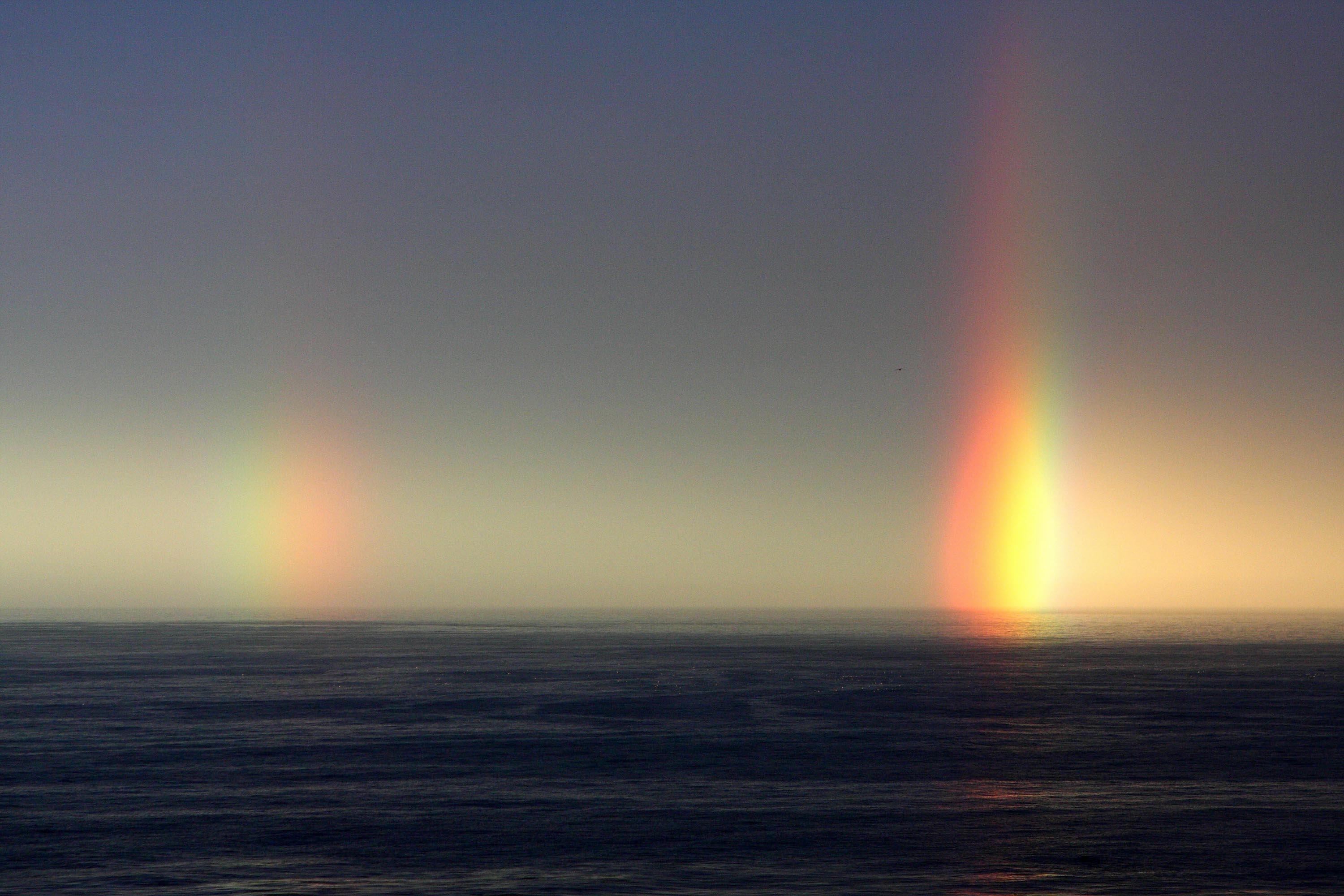In this article we are going to talk about rainbow, which is an atmospheric, optical and meteorological phenomenon at the same time. It is usually seen after rains or in hot weather. There’s no secret that there are as much hot days on the Commander Islands, as pines on the coasts. Still rainbows are frequent guests on the Commander Islands not only in summer, but also in autumn, which can rarely be seen on the continental part of Russia.
First, we should understand how rainbows are formed. As you already know rainbows are a combination of atmospheric, optical and meteorological phenomena. Usually it looks like a half-arch or a full arch with angular radius of 42?, which is divided into seven colors: red, orange, yellow, green, blue, indigo and violet. Several factors should coincide to make a rainbow. Source of light - usually the Sun, but it sometimes may be the Moon – should be behind your back. The light should be reflected from the backside of the drops suspended in the air, after rain for example, and come in your sight. The form of the rainbow reflects the round form of drops, which together form millions of spheres. Because of such fraction, the sunlight we all know divides into seven colors, as it is seen in prism experiments in school.
For this experiment you’ll need a prism of special optical glass, which is very clear, and a dark room to see the effect better. Put a ray of light towards the prism. Red light has the maximum propagation speed and the minimum degree of deflection. Blue light on the opposite – has the minimum speed and the maximum deflection degree. Don’t forget that the color is defined by the exact wavelength. It is counted in nanometers, for example, 440-485 nanometers is blue light, 500-560 – green, 620-740 – red. The outcoming ray of light is divided into seven colors. Isaac Newton set up such experiment for the first time in 1672.
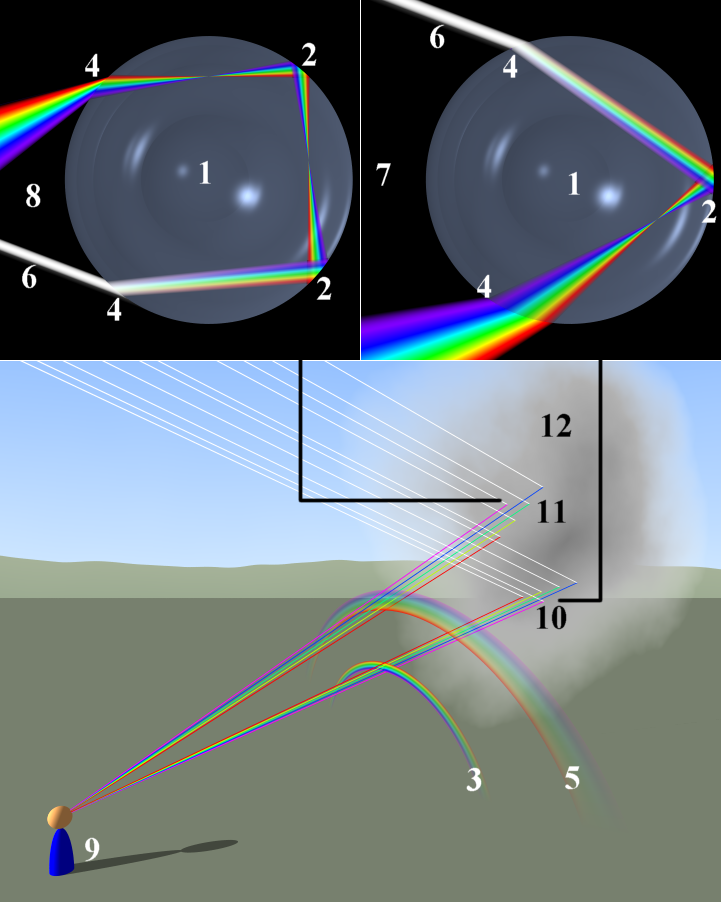
Scheme of rainbow formation and light deflection on a raindrop. Made by S?ren Peo Pedersen, Denmark. Distributed on the basis of GNU FDL license, version 1.2 or later. 1) Spherical drop. 2) Inner deflection. 3) Primary rainbow. 4) Deflection. 5) Secondary rainbow. 6) Incoming ray. 7) Ray rout forming the primary rainbow. 8) Ray rout forming the secondary rainbow. 9) Viewer. 10) Source region of the primary rainbow. 11) Source region of the secondary rainbow. 12) Cloud of small drops.
These seven colors are called simple colors. We see these colors in rainbows in the same order, but there are far more colors, which are hard to detect because of gradient shades of colors.
It was antique philosophers, who first proposed the idea that rainbows are a result of light bending in raindrops. For example, Aristotle thought that rainbows are a result of light deflected from the front sides – to the viewer – of raindrops. This theory is close to the truth but is not exactly correct. The correct theory was first published in a work of Croatian scientist and archbishop Mark Antoni de Dominis called De Radiis Visus et Lucis in Vitris Perspectivis et Iride, printed in 1611. Newton developed his ideas, proved them scientifically and made his own work called Opticks, which was published in 1704.
Rainbows appear all over the world on the same reasons – in Karelia, Caucasus or the Commander Islands. Still the Commander Islands are a special place – they have unique climate conditions of high air humidity, low atmospheric pressure, frequent showers and mild late winter, so rainbows can be seen right to the end of autumn. Sometimes we have a chance to see this colorful arch in the sky above the colorless tundra even in winter – in 2016 the last rainbow was seen on December 12. In was a ghostly rainbow above Nikolsky Reid Bay, which was seen only for few minutes, but it brightened our day and gave us warmth to overcome the upcoming frosts.
Such rainbows can be seen on the Commander Islands:
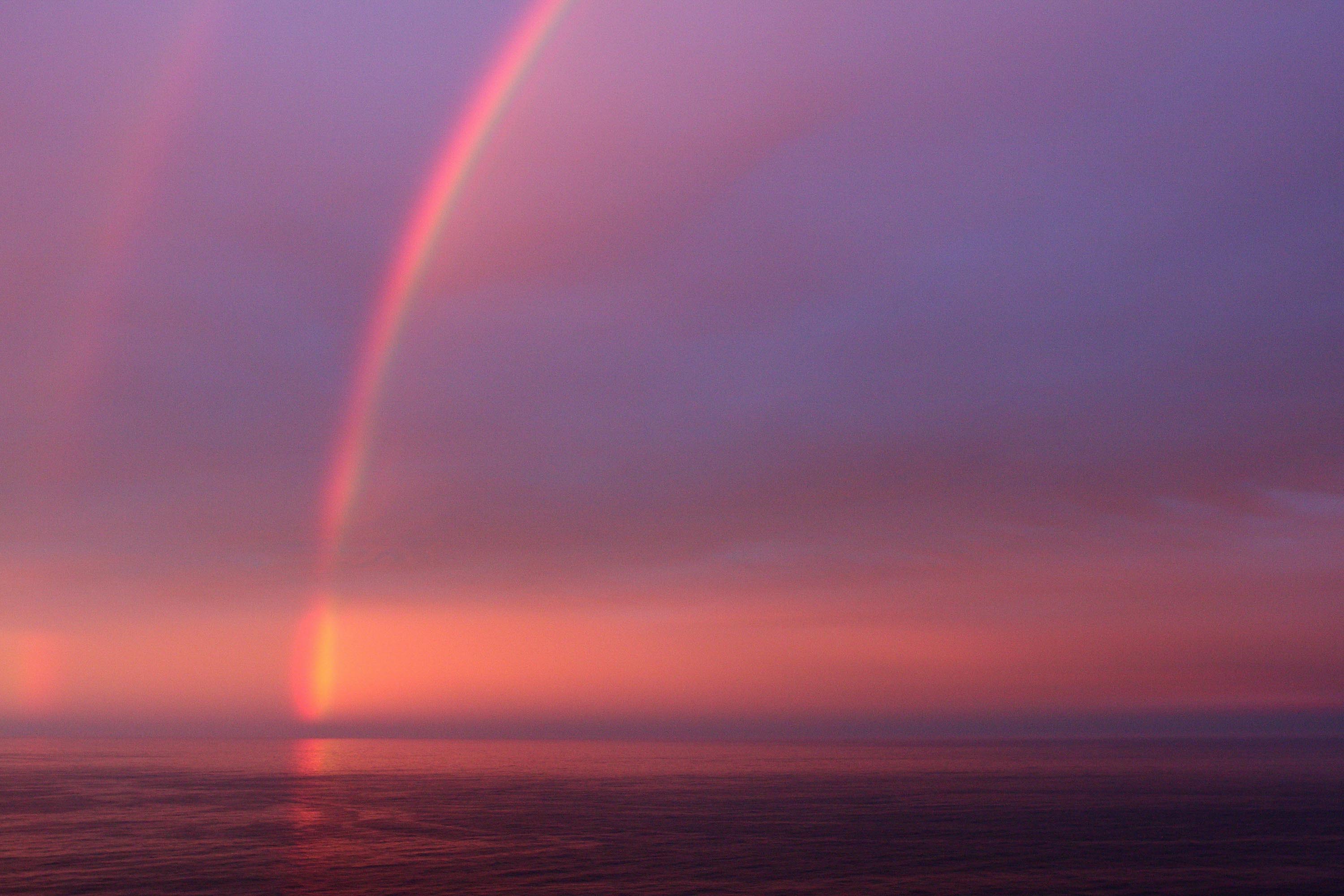
Double rainbow in the sea. By the way red sunset is a result of decomposition of light in the atmosphere
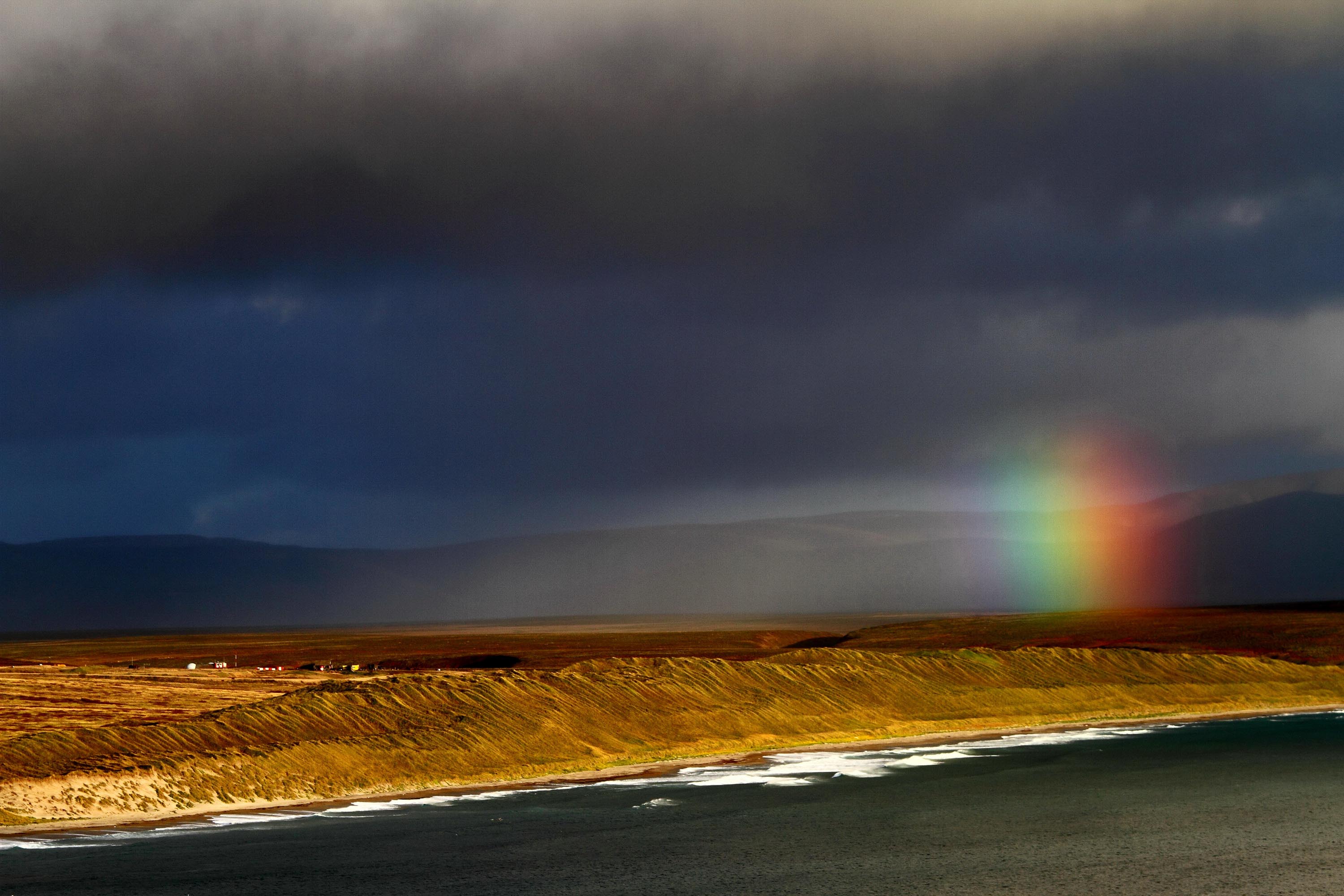
Rainbow on Bering Island near the airport
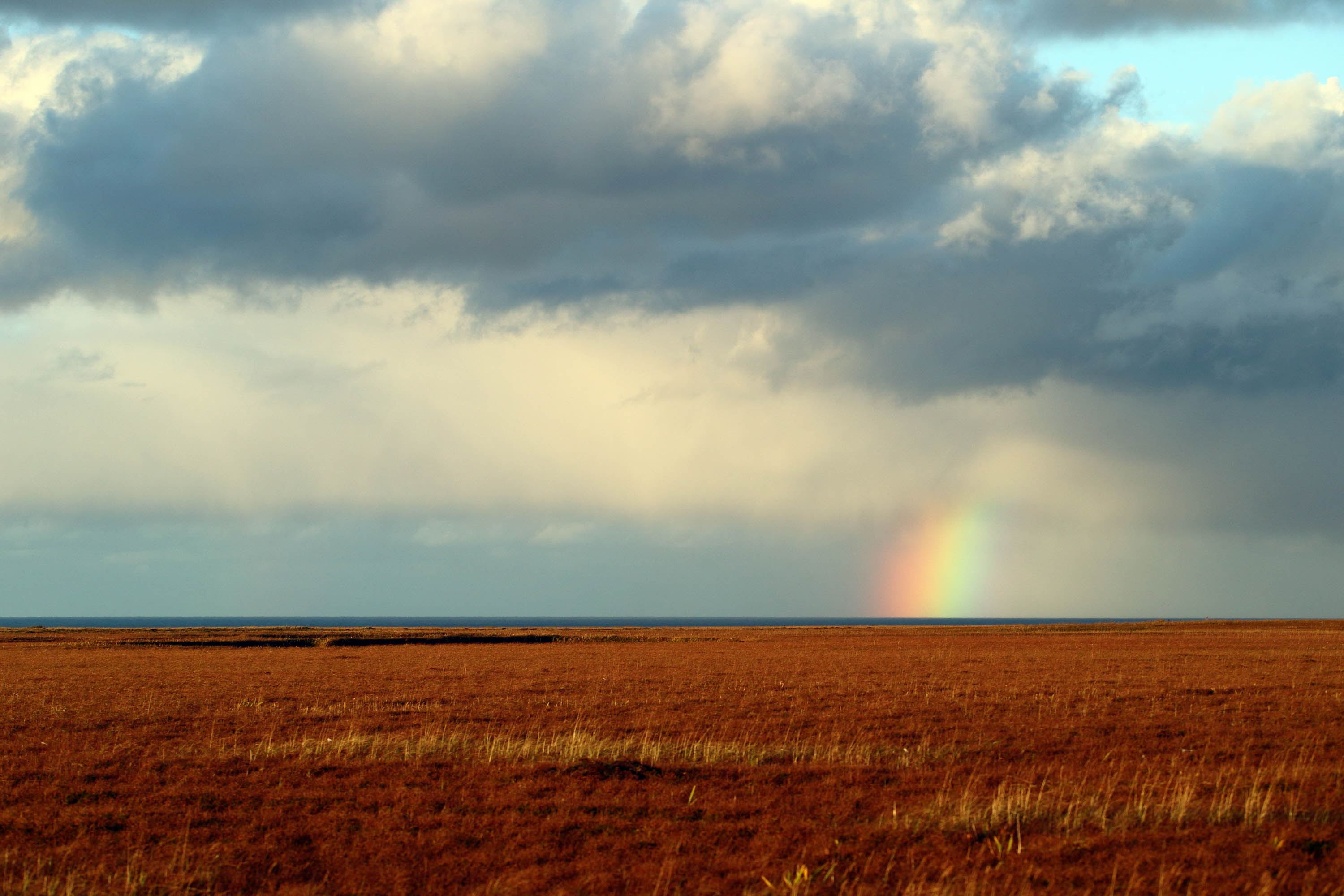
Rainbow in tundra, Bering Island

Rainbow in tundra above Nikolsky Reid Bay, Bering Island









